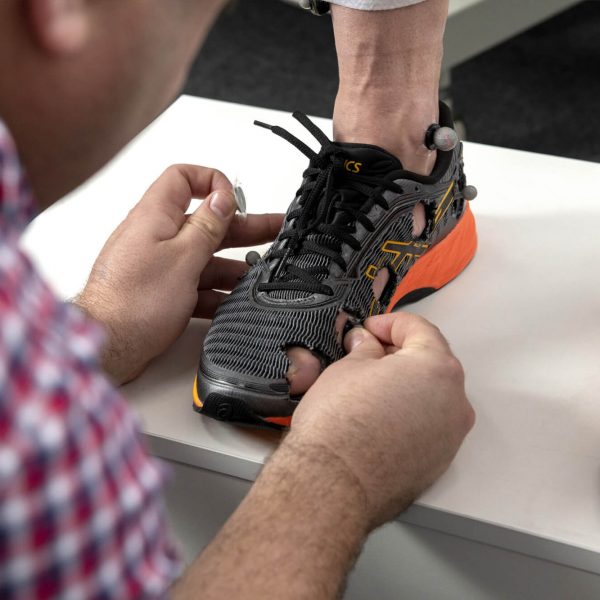Netball is the biggest team sport played in Australia, with over 1.2 million women, men and children playing throughout the year. With so many people playing it is inevitable that sometimes injuries occur.
“We are starting to see a large increase in clinic in what I believe are preventable injuries in adolescent netballers. These are injuries largely stem from a lack of strength and a lack of education of how to jump and land properly. This needs to be addressed at grass roots netball clubs as an urgent priority.”
– Dr Chris Bishop PHD
The most common injuries that occur are to the ankles and knees due to the strain they are put under with the increase in jumping, landing and twisting that occurs below the waist.
In the ankles we commonly see:
- Rolled/sprained ankles – occurs when the ankle is twisted, rolled or turned in an awkward way. This causes the ligaments in the ankle (which holds the ankle bones together) to strain and stretch resulting in swelling, pain, limited movement and tenderness.
- Broken or fractured ankles - as the name suggests a broken ankle occurs when one or more of the bones in the ankle break, either completely or partially. This happens by forcing more stress on the ankle than it can handle.
In the knees:
- Ligament damage including ACL injuries – There are 4 ligaments in the knee but the most common to injure in netball is the anterior cruciate ligament (ACL) which represent 25% of all netball knee injuries. These injuries occur due to sudden twisting of the joint or sudden impact on the knee.
- Meniscal injuries – The meniscus is a C shapes piece of cartilage which acts as a cushion between the shinbone and the thigh bone. Injuries to the meniscus can occur due to forcefully twisting or rotating your knee, such as aggressive pivoting or sudden stops and turns.
Here at TBL we aim to create strategies to prevent these injuries happening in the first place by using tried and tested methods.
Preventative Treatment
Be aware of muscle imbalances and perform exercises to correct them to focus on flexibility AND strength – At TBL we have a piece of technology called the AxIT system. This system can accurately measure the strength, power and force for a variety of muscle groups in the lower limbs. The information collected can identify deficits in muscle groups for targeting. Once this has been identified we prescribe exercises to build strength and increase flexibility to ensure all aspects are equal which decreases the likelihood and sustaining an injury to the previously weaker aspect.
Seek professional advice on proper athletic shoes - Footwear, by virtue of being the interface between the foot and the ground, can have a large effect on making running comfortable or uncomfortable. We spend a lot of time with our patients educating them about the benefits of different footwear and what is right for them. Footwear should be a prescription and prescribed by experts with experience in fitting footwear to the needs of the individual. We don’t let our patients be influenced by marketing trends or colours. They get the right shoe for them on their feet.
Learn proper landing techniques and perform balancing techniques – because we work with so many court-based athletes, we have designed a specialised 3D Gait Analysis technique for their needs. At TBL we conduct a 3D Jump Landing Analysis. This is designed to reduce the risk of serious knee and ankle injuries in court-based athletes, a force platform analysis allows us to understand how the body adapts to the forces applied to it when we jump, land and change direction. From this analysis we can see exactly how each athlete lands, if they favour one side and where on the foot they land. With this information we can train the athlete correct landing and balancing techniques to help avoid injury.
Rehabilitation
If you have been unlucky enough to experience any type of netball injury, or any serious sporting injury, then you will know a good recovery and rehab in essential. We create management plans to ensure your recovery is as fast and smooth as possible for your return to pain free exercise.
Post injury rehab – our rehabilitation approach is to provide tailored rehabilitation programs to suit your individual needs. We establish the goals of your program based on initial testing, and then guide you through each rehabilitation phase. We use strength testing and gait analysis for biomechanical measures to monitor your rehabilitation progress, ensuring you stay on track to reach your goals as quickly and safely as possible.
Post Op Rehab – we work with you to optimise your surgical outcome. Right from the moment you leave the operating room, you have a plan from us to restore motion, reduce swelling and improve function. We work with you as you restore strength and control of movement during the early-post-operative phase, and progress your rehab in conjunction with your surgeons instructions to deliver you not just pain free movement, but a return to pain-free exercise.






